All you need to know about your products!

| 3DNews Vendor Reference English Resource - All you need to know about your products! |
||||||
 |
||||||
|
|
||||||
Gigabyte GeForce 6600GTAuthor:Date: 28/11/2004 Introduction
Three months ago, on 12 September, NVIDIA presented two new solutions of the GeForce 6 Series - GeForce 6600GT and GeForce 6600. To date, most partners of the company have already announced their own products based on these chips. Since 6600GT and 6600 originally positioned as mainstream solutions, the manufacturers are absolutely free at increasing the clock speeds (a salute to Gainward and its solutions on the base of 6600GT, which you will soon come across in one of our forthcoming materials), at fitting faster memory, additional power connector, and other modifications, starting with the simplest - the cooling system. All in all, again the troublous times of mix-up and total chaos are coming back: there are not so many chips, but based on them an awful lot of products of absolutely different specifications have been created, which are so difficult to make head or tail. Well, let's be the first on the front of the battleground and try to put the process as simple as we can. 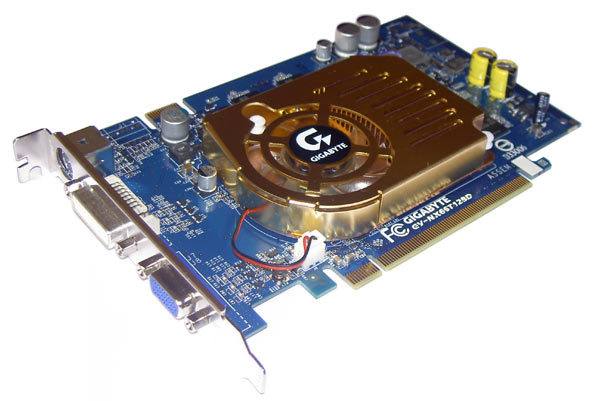 Gigabyte GeForce 6600GT To begin with, some lead-in. To date, there exist six types of PCI-E video cards for the Middle-end sector of video accelerators. From ATI's part, these are X700XT/Pro and X600XT/Pro, with NVIDIA radiant for its GeForce 6600GT/6600. Officially, one more X700 without any suffixes has been announced, but nobody is still producing it - looks like ATI has brought the project to a standstill. All these six existing solutions in their classical form took part in today's tests - we'll be progressing from the simple to the complex, leaving any nonstandard products based on the above chips until later. With the release of X700 and GeForce6600, the NVIDIA PCX 5900 at performance gradually moved to the low-end sector. At 3DMark2005, PCX 5900 lags behind ATI X600 Pro by 35% and was ruled out of today's tests. That's a knock-out, isn't it? But despite the so cruel "natural selection", it should be noted that the major heroine of today's material has its own peculiarities - it is based on NV43 chip but already of revision (A2). By the way, any changes to the lithographic production cost to the customer as much as one million dollars. At least, this is the amount of levy that TSMC charges ATI when the latter submits documentation for a new version of already launched high-end chip. And how much it is to set up a batch production of an entirely new chip is covered with mystery. Evidently, much more than that. Anyway drug barons in Latin America would bite elbows in envy on knowing the true figures. But, let's come back to the subject. Definitely, such high expenses bring hefty profits. For example, use of the second revision with reduced heat emission allowed Gigabyte to fit a regular aluminum radiator and be happy - the card offers fantastic overclocking potentials in this make even without using costly copper. Now let's recall the brief specifications of the cards that participate in today's tests.
Having done with formalities, now let's get round straight to examining the card. Gigabyte GeForce 6600GT FeaturesPackage bundle:Rejoice, the plentiful army of DOOM3 worshippers! Gigabyte has brought you a gift - in the package bundle you will find a special 3-CD edition of your favorite game and, after flight from Mars, admire the box as well made in the fully matching style. 
But beside the DOOM3 itself you will find a lot of useful and interesting items, namely: 1. Video card Gigabyte GeForce 6600GT (GV-NX66T128D); 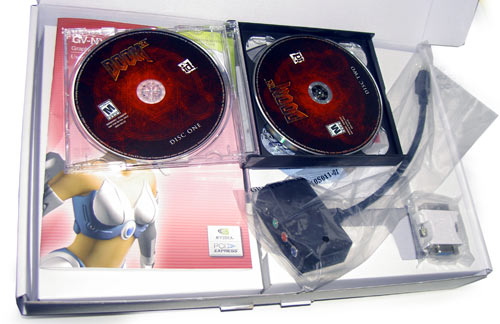
Design and layout: The board is made on blue textolyte, a solution traditional for Gigabyte as far as products built on NVIDIA chips are concerned. The PCB design is a complete replica of NVIDIA's reference design and has no additional power connector - but some manufacturers of 6600GT have fitted it anyway. They may have either insured themselves or used the first revision of GeForce 6600GT chip.
The shape and dimensions of the cooling system fitted on the card are fully identical to what we saw on the very first sample of 6600GT . The aluminum radiator with a small fan covers only the GPU, leaving the four memory chips on the board's front side without any heat spreaders. As we have repeatedly mentioned, you don't have to do that because the heat emission of the card is not high, and the recommended minimum power rating of the PSU for this board is 300W (of course, that does not apply to PSUs of Codegen class). And, as we already mentioned in the beginning of this material, use of NV43 revision 2 allows Gigabyte excluding the problem completely. 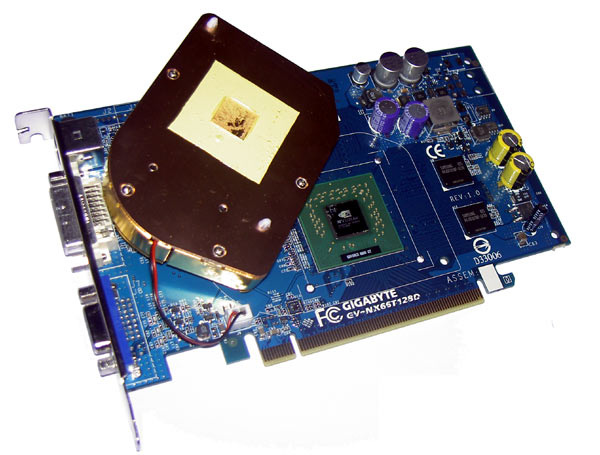
Let's look at the GPU. The rated speed of the chip GeForce 6600GT is 500MHz (no deviations from the reference), and it was made on the 35th week of 2004, also of revision А2: 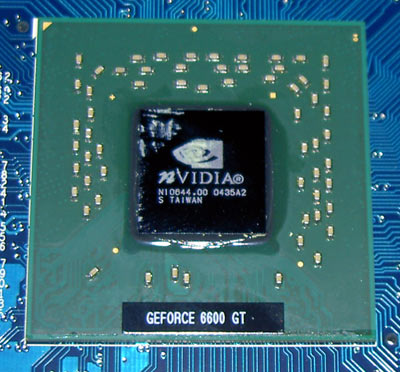
There is 128 Mb GDDR3 memory with a 128-bit data transmission bus assembled with four K4J55323QF-GC20 Samsung chips made in the BGA form factor, of 2 ns access time, which is equivalent to the operating frequency 500 MHz (1000 MHz DDR). The rated operating frequency of memory on Gigabyte GeForce 6600GT fully meets the value. In our forthcoming materials, we'll be reviewing many interesting boards on the base of the GeForce 6600GT chip, including those equipped with much faster memory (1.6 ns access time). 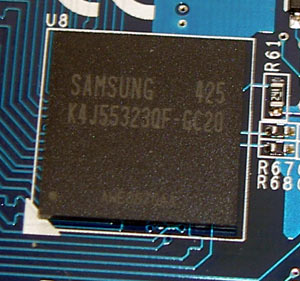
There is also welded space for VIVO, but the chip is not installed. 
Certainly, there is a SLI connector on board. 
And a standard set of outputs - digital, and TV-OUT. 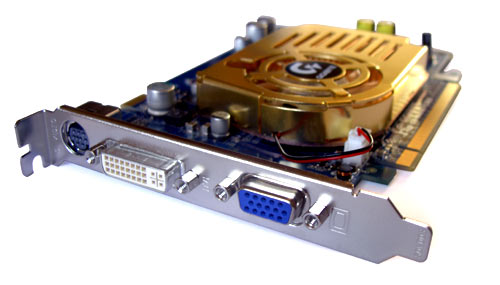
As we can see, RivaTuner fully recognized the card. 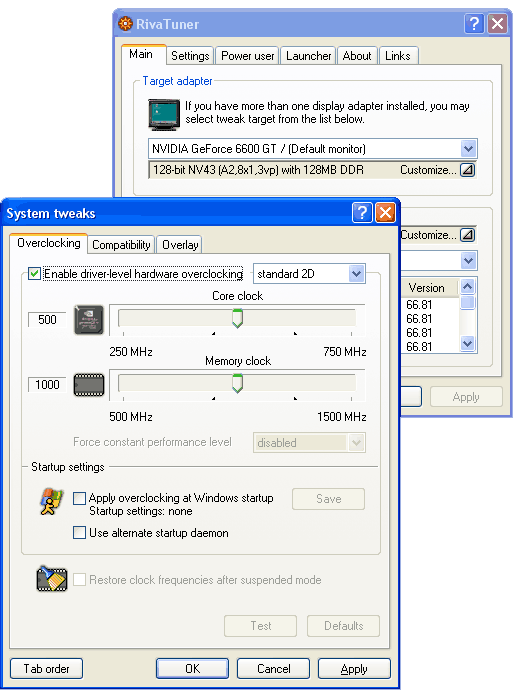
Now let's look at the card in action.
 Here is a list of video cards that took part in the tests: Test software:
Tests of Gigabyte GeForce 6600GTSynthetic tests
6600GT performs very well versus its direct competitor X700 XT, which is especially seen as the resolution goes up. 6600GT shows much higher results in all the tests except the both Vertex Shader, which is no wonder that the card offers merely 3 VP versus 6 VP offered by the Canadian rival. We'll be running more extensive and detailed analysis of 3DMark 2005 results in our material devoted to the new Futuremark's benchmarking package - Test of 40 video cards in 3DMark 2005. 

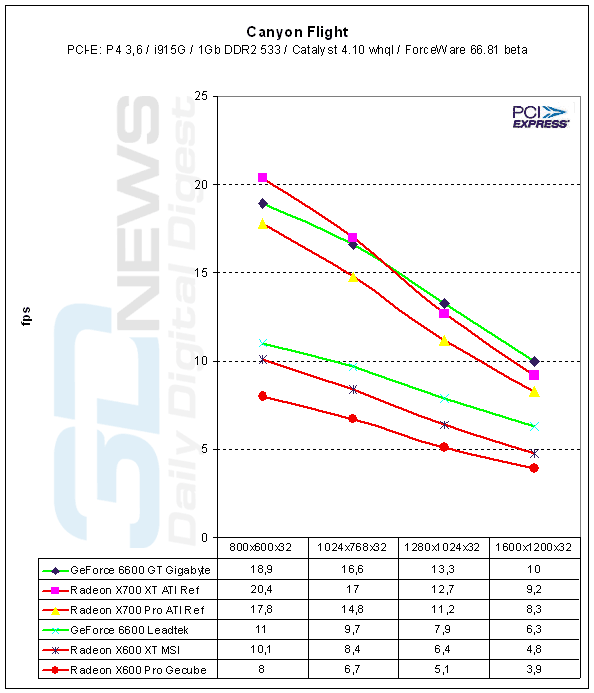
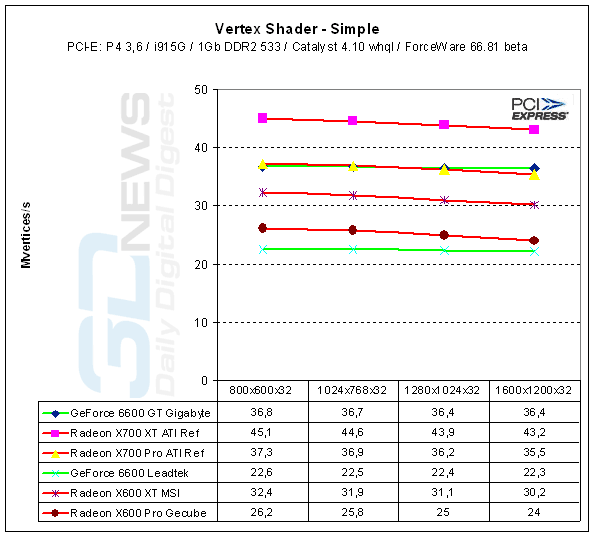
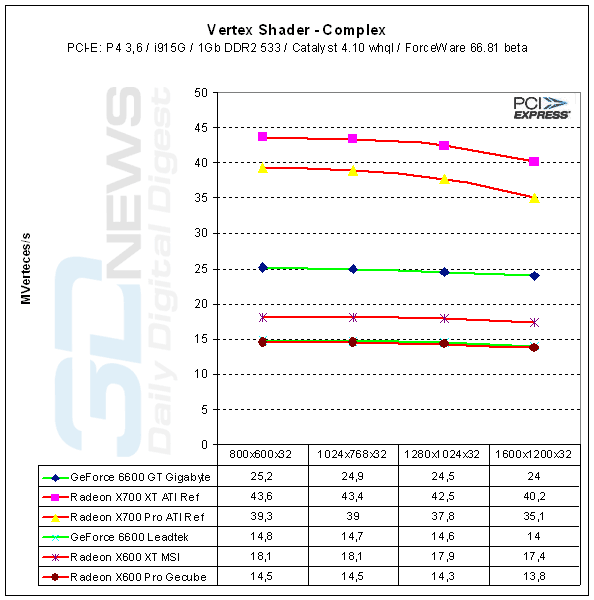

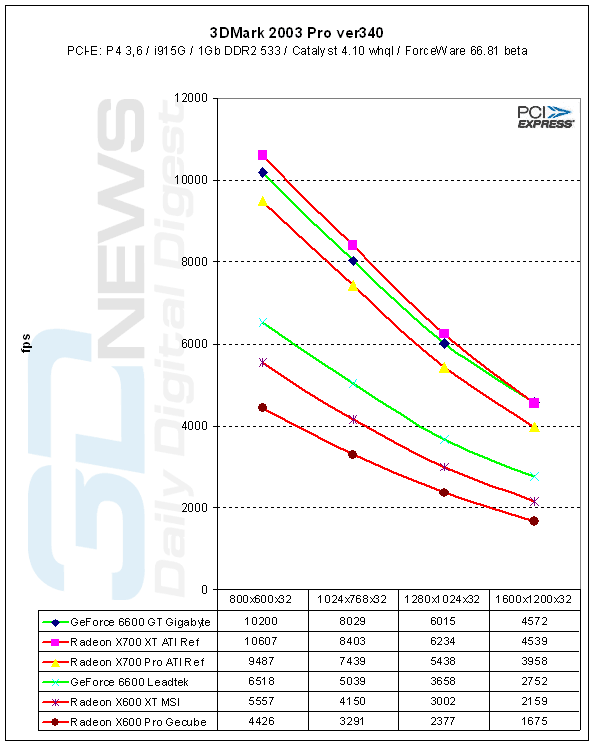



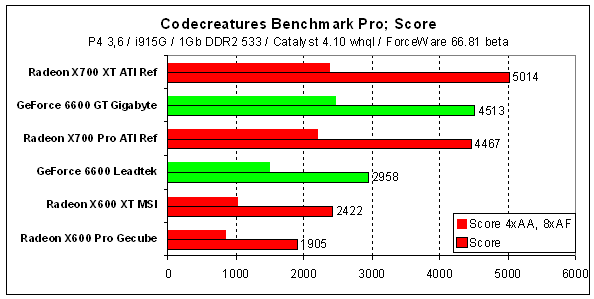
Gaming benchmarks





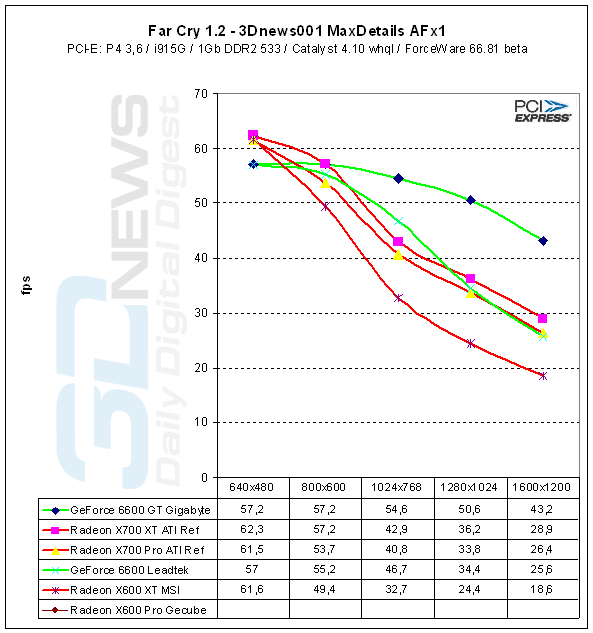
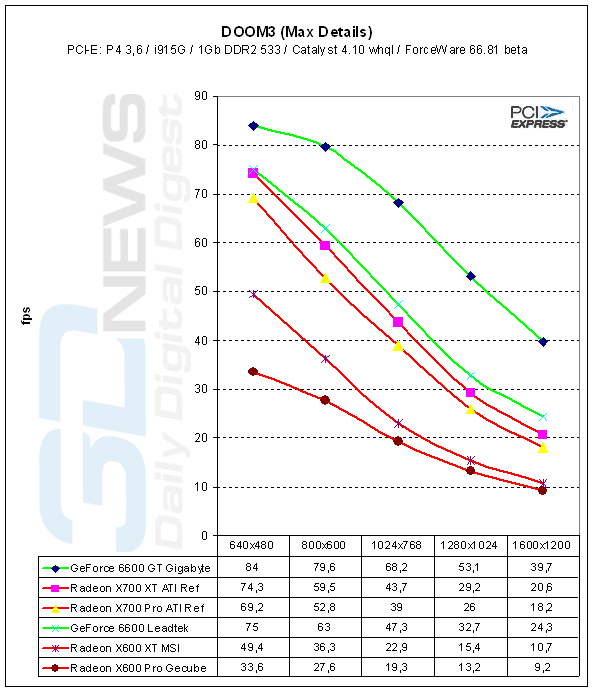
|
||||||||||||||||||||||||||||||||||||||||||||||||||||||||||||||||||||||||||
|
|||||